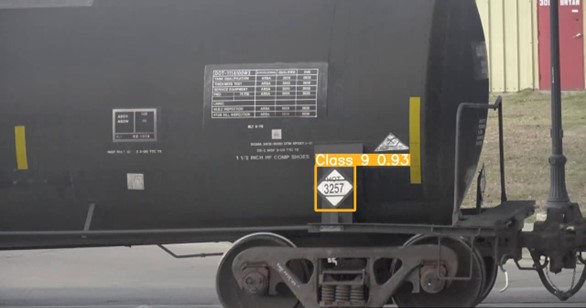Have you ever watched an episode of the entrepreneurial business reality television show Shark Tank? A small team of TTI researchers are living a version of it. The team competed and was a winner in the Texas A&M Advancing Discovery to Market program. The winners receive funding to advance promising discoveries to marketability.
The TTI team pitched using recent successes in deep learning / machine vision to identify, classify, and log hazardous materials placards. The log can then be used better to understand hazmat presence, flow, potential exposures, and needed emergency response protocols.
The diamond shaped placards include coded information describing the hazards of the contents. This information is specifically needed by first responders to fully understand the situation at hand and plan their course of action. Sample placards are shown below.

Let’s look a little deeper. The transportation network brings all kinds of hazards through communities every day. Are the emergency management people fully aware of the exposure and risk? Understanding the risk begins with identifying the hazards and the frequency. This is not an easy process. Researchers are working to build a cost-effective solution using a camera and artificial intelligence to do the job.
Some early research results working with railcars are shown in the videos below. Each railcar which carries hazardous materials must have a placard on each of the 4 sides and in easy view:

The following videos show some early research results. In the first video, a train passes, and any identified hazmat placards are identified with a confidence level included. These will be further processed to recover the number on the placard.
Let’s look at another sample. Note the lighting is not ideal but acceptable showing the system can work in a varying environment. Both video samples here were taken in a grade crossing although this is not required.
